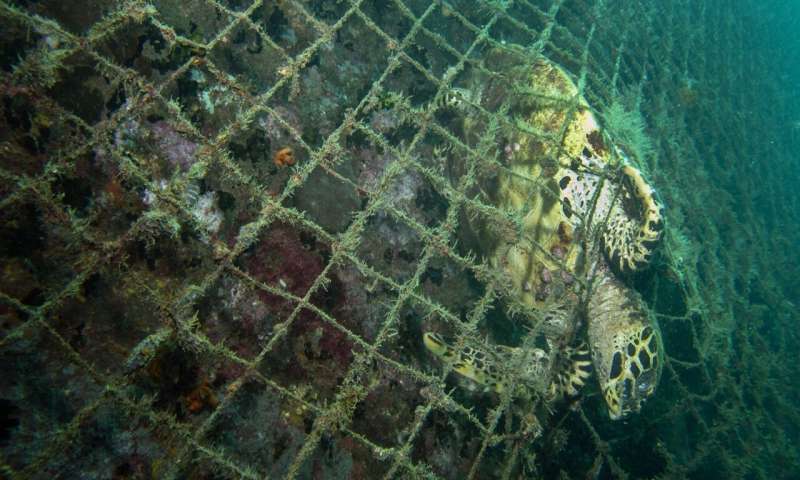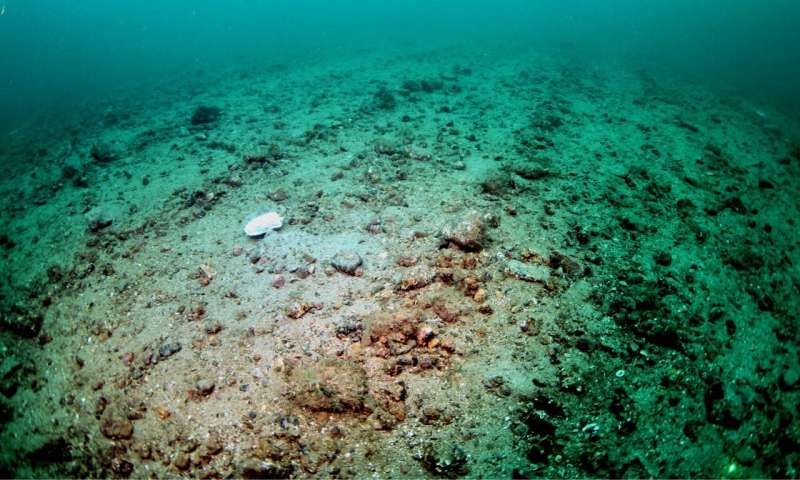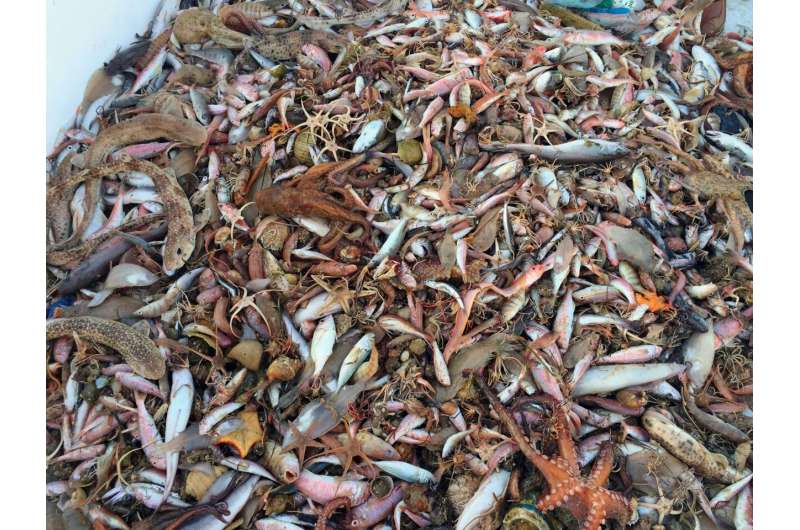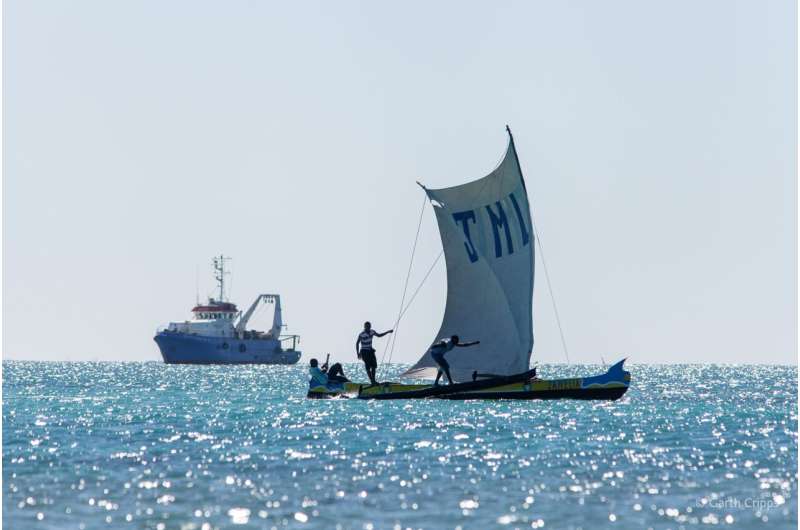Report highlights urgent need to end bottom trawling

The recent explosion of public interest in marine fisheries—driven in large part by the controversial success of Seaspiracy—has put the fishing industry firmly in the global spotlight, but has also highlighted how complex and easily misunderstood this sector is.
In its new report "Bottom Trawling: New perspectives on an old fishing practice," Fauna & Flora International (FFI) joins a collaboration of world-leading fisheries scientists and ocean experts in calling for constructive pathways forward to tackle the impacts of bottom trawling, arguably the most pervasive, contentious and environmentally damaging of global fishing practices.
Aiming to bring much-needed clarity to the intense debate around bottom trawling, the report collates the huge variety of scientific, political, industry-led and community-led approaches to managing this fishing method, from grassroots movements seeking to exclude bottom trawling from inshore areas to cutting-edge research quantifying the precise nature of its seabed impact.
Drawing on the findings of this new report, we want to answer some key questions about bottom trawling:
What is bottom trawling?
Bottom trawling is a way of catching bottom-dwelling marine life by towing a cone-shaped net through the ocean while maintaining contact with the seabed. This practice can be performed using a variety of fishing gears that include "otter trawls," where wooden or steel boards hold the net open at either side, and "beam trawls," where the net is held open by a wooden beam.
Other forms of fishing gear related to bottom trawls are also considered in the report, most notably dredges, which are also towed along the seabed but use a metal cage rather than a net as a catching device. Bottom trawling should not be conflated with mid-water trawling, as its effects are substantially different.

What are the target species of bottom trawling?
Bottom trawling is responsible for more than a quarter of all global catch—the biggest contribution of any single fishing practice—and targets a huge variety of wild species both for human consumption and for making feed for farmed animals. In temperate waters target species include bottom-dwelling fish such as cod, plaice and other flatfish, and cold-water shrimp; in tropical waters trawlers target warm-water shrimp as well as aiming for a mixed species catch that is converted to fishmeal to feed farmed fish and livestock. By contrast dredgers exclusively target shellfish, such as clams, cockles and scallops.
Why is bottom trawling controversial?
Ever since humans first began dragging nets along the seafloor, social tension has existed between those doing the bottom trawling and other fishers displaced by it as well as the coastal communities witnessing environmental changes after its introduction. Opponents say bottom trawling is, by its very nature, destructive to seabed habitats, a range of marine species and coastal cultures, and should therefore be treated as a unique case in fisheries legislation, whereas its defenders praise its efficiency and necessity given the demand for seafood, and claim its negative impacts are overstated.
What are the environmental impacts of bottom trawling?
Bottom trawling and dredging can cumulatively lead to three major environmental impacts: decline of target species (overfishing), bycatch and seabed damage. This is especially true when the practice is poorly managed.
The ability to cause declines in target species is not restricted to bottom trawling and—whilst there are some high-profile cases of bottom-trawl fisheries leading to collapses, most notably Canadian cod—there is minimal evidence to suggest that this practice is more likely than others to lead to long-term species decline. The bycatch issue is more clear-cut; while all fishing can catch non-target species alongside targeted ones, bottom trawling can be among the most unselective, with some shrimp-trawling catches comprising 90% non-shrimp species.

Crucially, the fundamental characteristic of all bottom trawls and dredges is the need for at least some of the gear to make sustained contact with the seabed. It is not controversial to describe this as the single most widespread source of human disturbance to the global seabed, with at least 1.1 million km2 of seabed exposed to at least one pass of a trawl every year. Complexity arises when defining precisely what impacts this has. All trawl gears scrape the seabed, but some penetrate it more than others. Delicate habitats (such as cold-water coral reefs) are also affected much more seriously (and in some cases irreversibly) than simple habitats (such as sandy underwater plains—although this, too, is complicated, as bottom trawling is so established in some places that it's hard to know what the natural state of the seabed would have been).
Does bottom trawling contribute to climate change?
Accounting for carbon emissions in the fisheries sector is a new field of study. While recent studies finding that emissions from bottom trawling are comparable to those of the aviation sector remain highly disputed, there is no doubt that several bottom-trawled species are among the most fuel-intensive forms of animal food in the world—more than poultry and comparable to lamb.
Which are the biggest bottom-trawling nations?
The report finds that, in terms of volume, China, Vietnam and Indonesia are the three biggest producers of trawled catch. The top 20 nations also includes U.S., UK, Russia, Norway and New Zealand. In terms of intensity (the amount of trawled catch per size of the country's marine area), West African nations dominate; however, up to 90% of this is caught by foreign nations fishing in those countries' domestic waters—through trade agreements that are often inequitable.
How can the impacts of bottom trawling be tackled?
Historically, approaches to reducing the negative effects of bottom trawling have focused either on improving fisheries management or on various forms of restriction. Improvements have seen trawl fisheries become lower impact, with gears improved to reduce the intensity of their seabed contact, and in some places the footprint of this industry has stabilized or even decreased (though notably the footprint in nations with minimal regulations is still growing).

Restrictions have ranged from socially divisive bans (e.g. Indonesia, Costa Rica) to phased, appropriately financed transitions (e.g. Hong Kong, Belize). Whatever the mechanism, it is clear that only by supporting approaches that are fair, constructive and holistic will the ongoing, intractable debate around the future of bottom trawling be resolved.
Despite the entrenched and often bitter debate, there is a surprising level of consensus among some sectors of the fishing industry, researchers, governments, civil society, and NGOs that bottom trawling presents unique and critical challenges to environmental, social and climate goals for fisheries.
There is therefore hope that, if all parties can work together more constructively, we can move towards a more sustainable future, where the rights of those working in the industry, and those affected by it, are respected.
The Transform Bottom Trawling Coalition—co-founded by Blue Ventures and FFI, both of whom contributed to this report—explicitly calls out four actions to reduce both environmental and social impacts:
- strengthen national inshore exclusion zones for small-scale fishers
- prohibit bottom trawling in all marine protected areas
- end harmful subsidies to bottom trawlers while supporting a fair and just transition for all those affected
- prohibit the expansion of bottom trawling to new, untrawled areas
It's time to inject new ideas and new ambitions into the polarizing debate about bottom trawling. How do we transform the way we catch seafood to ensure a healthy seabed? What are the social and economic trade-offs of reducing our reliance on bottom trawling? Where we conclude that long-term benefits outweigh short-term costs, who is affected by that decision and how do we make transitions away from trawling fair? Only by confronting these challenging but necessary questions will we ensure sustainable, socially just fisheries and vibrant marine ecosystems for the long term.
More information: New perspectives on an old fishing practice: Scale, context and impacts of bottom trawling. www.fauna-flora.org/app/upload … fishing-practice.pdf
Provided by Fauna & Flora International




















